Guizhou might not be your first choice when planning your trip to China. Though not as famed as Beijing, Shanghai or Xi'an, Guizhou Province is definitely the hidden gem of southwest China. It has recently been picked as one of Lonely Planet's top 10 regions in the world to visit in 2020.
From typical karst landform, lush greenery, cultural diversity to appetizing food, you can have them all in Guizhou. Follow CGTN Travel and check out the three popular routes to explore the gorgeous and charming place.
Southwest Route: Guiyang-Anshun-Qianxinan
Guiyang, the capital of Guizhou, is where visitors usually start their journey. If you look for the landmark of the city, that would be Jiaxiu Tower, a wooden tower built during the Ming Dynasty (1368-1644) on Nanming River. On top of the tower, you'll be able to enjoy the surrounding city scenery. When the night falls, the tower and bridge are adorned with colorful lanterns that are beautifully reflected in the water.
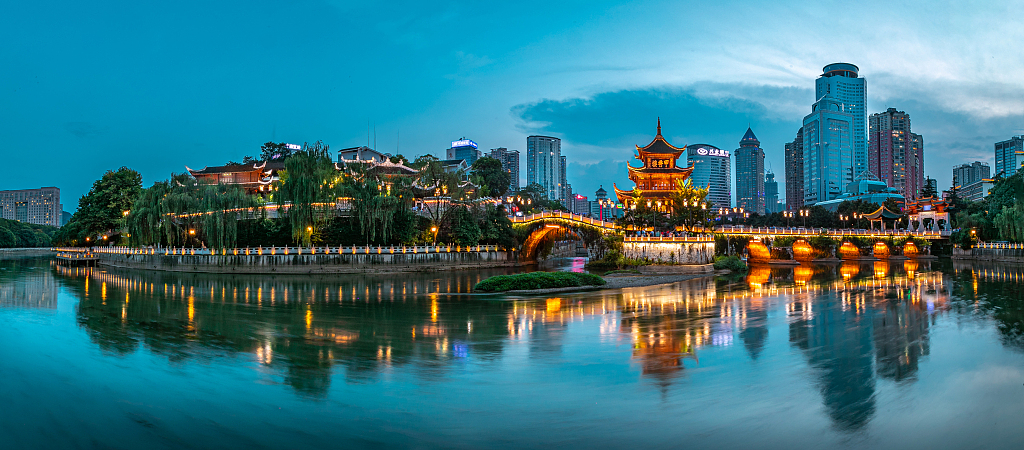
Jiaxiu Tower in downtown Guiyang, southwest China's Guizhou Province. /VCG Photo
Jiaxiu Tower in downtown Guiyang, southwest China's Guizhou Province. /VCG Photo
There's also an ancient town that has been standing there for over 600 years. If you're interested in antiquity, check out more information about the Qingyan Ancient Town.
At the next stop in Anshun, one sight that you cannot miss is China's largest waterfall Huangguoshu. The unique natural splendor is indeed awe-inspiring.
01:25
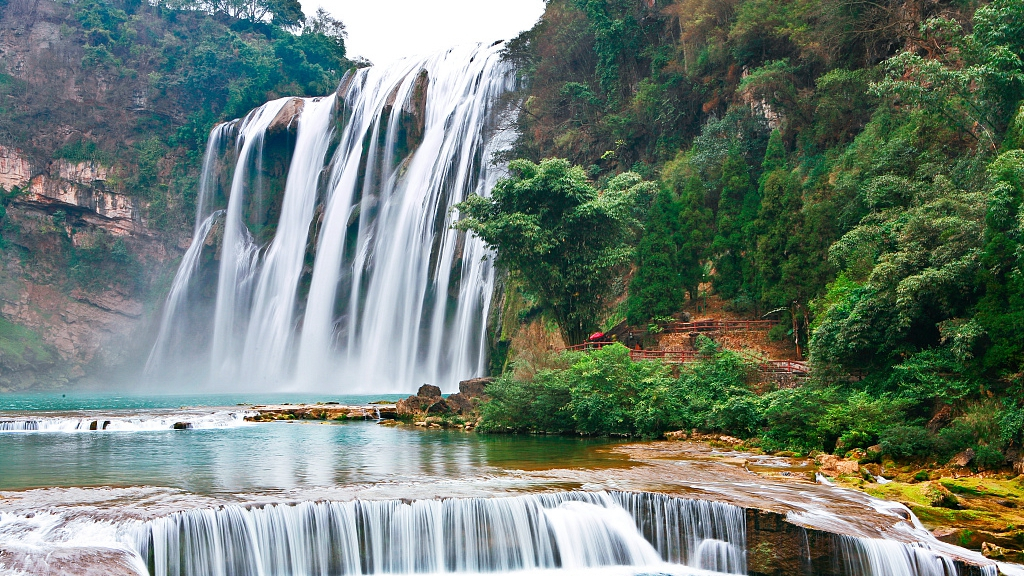
Wanfenglin, also known as Ten-Thousand Peak Forest, is the most-visited attraction in Qianxinan Buyi and Miao Autonomous Prefecture. Composed of eastern and western sections, it features karst peak clusters embraced by green fields, winding rivers and quaint villages.

Wanfenglin or Ten-Thousand Peak Forest in Qianxinan Buyi and Miao Autonomous Prefecture, southwest China's Guizhou Province. /VCG Photo
Wanfenglin or Ten-Thousand Peak Forest in Qianxinan Buyi and Miao Autonomous Prefecture, southwest China's Guizhou Province. /VCG Photo
Southeast Route: Guiyang-Libo-Kaili-Zhenyuan-Liping
From the capital city of Guiyang, you can also go east to explore mountains, forests and cultural activities.
In Libo County, the Zhangjiang Scenic Area is characterized by unique karst landscapes, mysterious dense forests, various living species, splendid overlapping mountains and clear water. Xiaoqikong, Daqikong and Shuichun River are the major attractions.
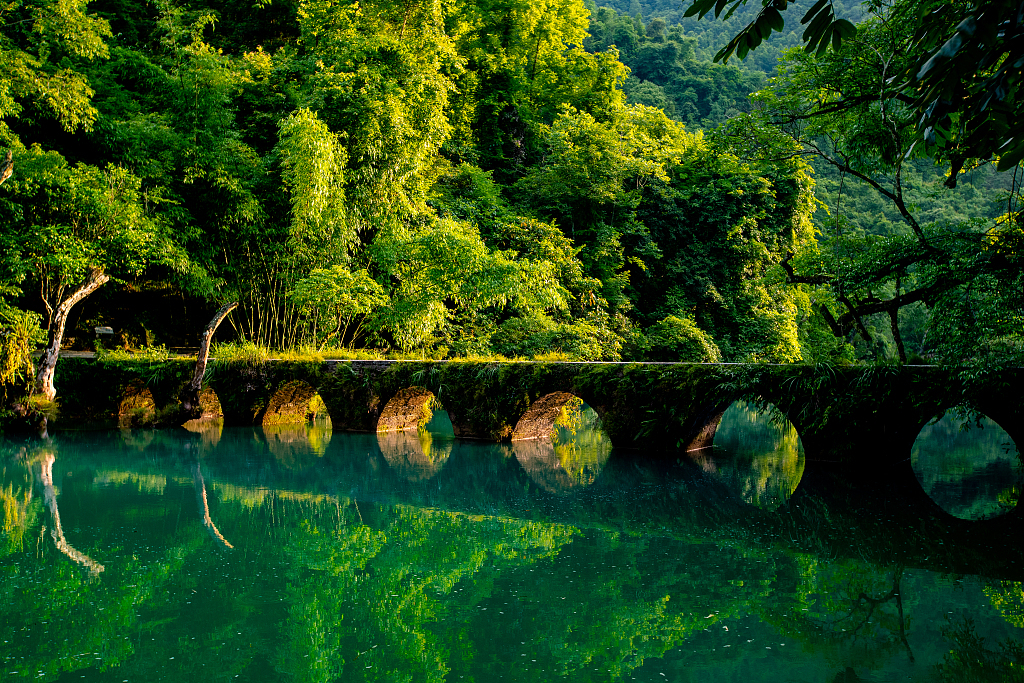
Xiaoqikong scenic area is also known as "small Jiuzhaigou" – a renowned nature reserve in southwest China's Sichuan Province. /VCG Photo
Xiaoqikong scenic area is also known as "small Jiuzhaigou" – a renowned nature reserve in southwest China's Sichuan Province. /VCG Photo
Guizhou boasts diverse ethnic cultures with Miao ethnic group taking up a large proportion. Here in Kaili, you'll be able to experience its cultural charms at one of the local Miao villages. That's why Kaili has been listed as a "World Ethnic Minority Cultural Protection Circle" by the United Nations World Cultural Protection Foundation.

The ethnic performance at Nanhua Miao Village in Kaili, southwest China's Guizhou Province. /VCG Photo
The ethnic performance at Nanhua Miao Village in Kaili, southwest China's Guizhou Province. /VCG Photo
When you come to Zhenyuan County, another ancient town awaits. Only this time, it has over 2,000 years of history. Check out the unspoiled wonderland in Qiandongnan Miao and Dong Autonomous Prefecture.
If the Miao village gets you more intrigued by China's ethnic charms, then Zhaoxing Dong Village in Liping County will satiate your ethnic appetite. Walking into Zhaoxing Dong Village, one will feel as if the clock was turned back. All the buildings in the village are wooden-stilt houses, surrounded by verdant mountains with a stream running through.
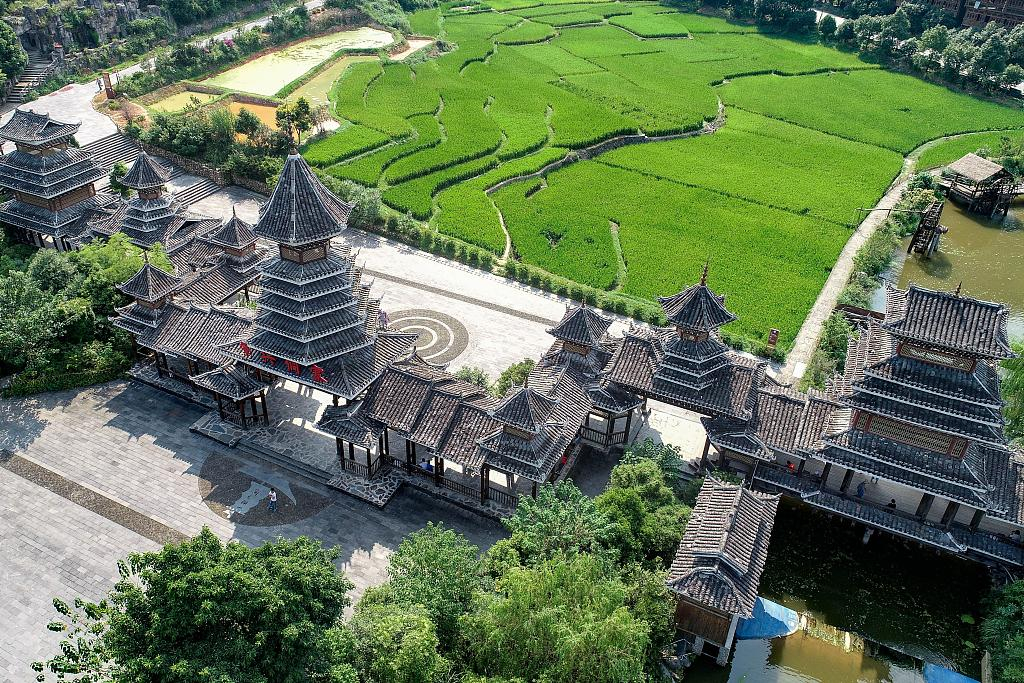
Zhaoxing Dong Village in Liping County, southwest China's Guizhou Province. /VCG Photo
Zhaoxing Dong Village in Liping County, southwest China's Guizhou Province. /VCG Photo
North Route: Tongren-Zunyi-Maotai-Xihui-Chishui
The northern Guizhou offers visitors a journey to explore some of the World Heritage sites. Mount Fanjingshan in Tongren City is the highest mountain of the Wuling mountain range in southwest China, with its highest peak standing at 2,572 meters above sea level. Soaring up with over 8,000 steps, it rewards hikers with peculiar rock formations and mind-blowing above-the-clouds views.

Mount Fanjingshan in Tongren County, southwest China's Guizhou Province. /VCG Photo
Mount Fanjingshan in Tongren County, southwest China's Guizhou Province. /VCG Photo
Zunyi is an important historical location for its part in the Red Army's Long March, and it's also known for Guizhou delicacy. Some say Guizhou people have an appetite for sourness, and those who live in Zunyi have a love affair with mutton. The dish of lamb rice noodles is a representative that will get you lost in the Guizhou flavor.
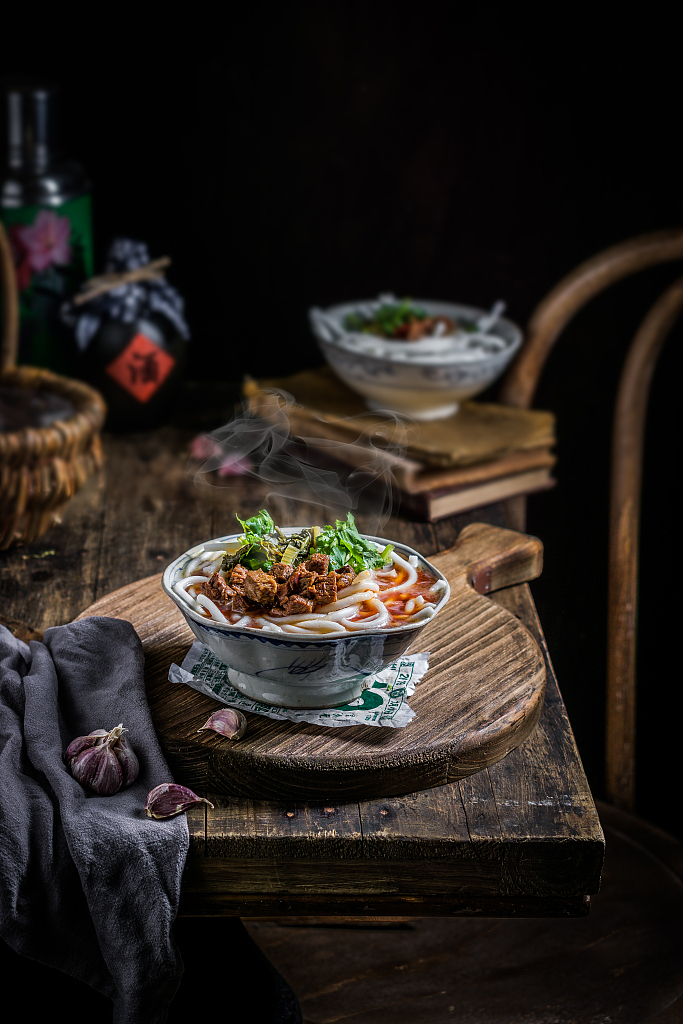
Lamb rice noodles. /VCG Photo
Lamb rice noodles. /VCG Photo
Maotai Town is the birthplace of China's typical distilled liquor. There are hundreds of wineries here, giving tourists plenty of chances to sample the local wine culture.
If you're into Chinese ancient architecture, you can stop by Xishui County and take a tour around the Tucheng Ancient Town that is off the beaten path but offers simplicity and authenticity.
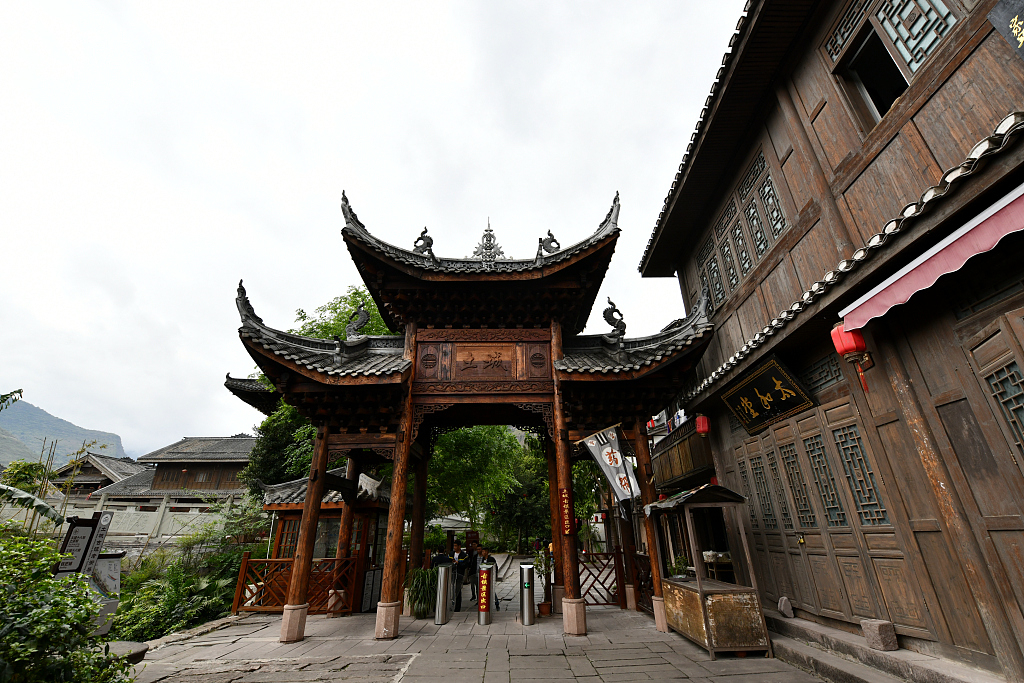
Tucheng Ancient Town in Xishui County, southwest China's Guizhou Province. /VCG Photo
Tucheng Ancient Town in Xishui County, southwest China's Guizhou Province. /VCG Photo
The last stop at Chishui presents you with another World Heritage site. The Chishui Danxia is a unique type of red rock landscape scattered throughout southern China. Covering 1,200 square kilometers, it's considered the most splendid danxia landform in China.
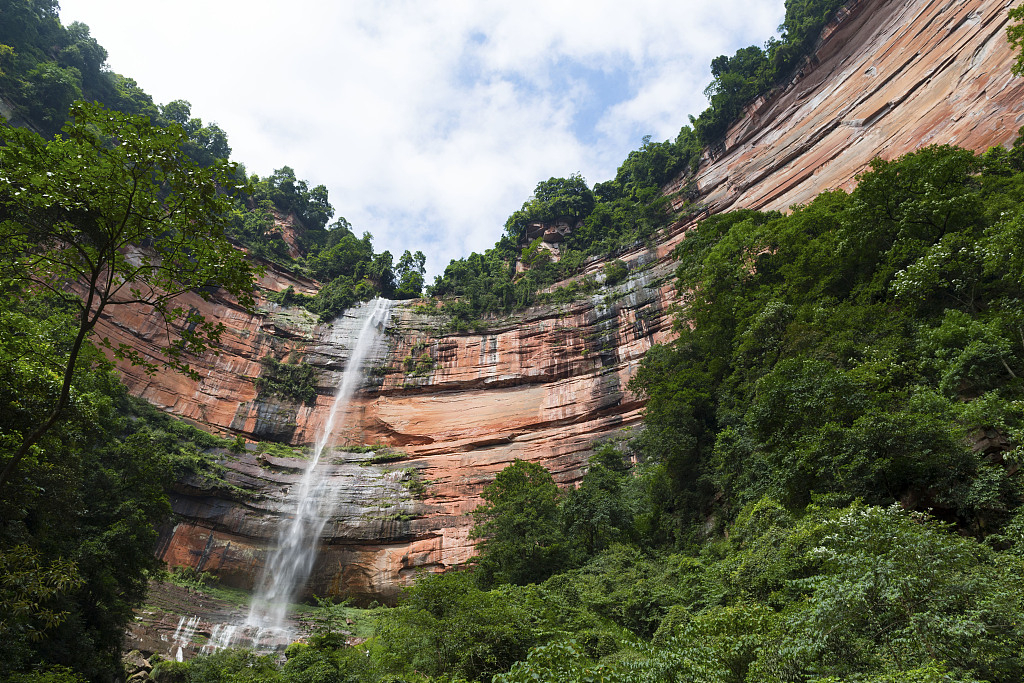
Foguang Rock in Chishui Danxia Scenic Area, southwest China's Guizhou Province. /VCG Photo
Foguang Rock in Chishui Danxia Scenic Area, southwest China's Guizhou Province. /VCG Photo